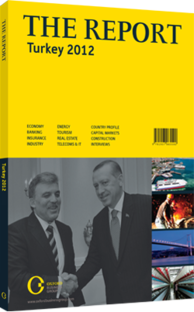Halkbank: Banking
THE COMPANY: In 2011 the central bank’s macro-prudential policy measures utilised tools that directly and adversely affected Turkish banks. However, the tightening should lessen in 2012 as we foresee growth concerns surfacing and supportive macro data. Accompanied by improving global risk appetite and capital flows to emerging markets, this should eliminate the need for further tightening, relax liquidity and reduce the pressure on lira funding costs. Net interest margin (NIM) should remain resilient as asset repricings outstrip the adverse impacts of the take-up in deposit costs. Lower loan growth due to reduced demand, monetary policy and possible degrading foreign funding inflows may lessen detrimental competition in 2012. Foreign funding will be the key issue, especially in the first half of 2012, yet we are sanguine on this, projecting that at least 90% of short-term foreign funding will be rolled over at higher costs. Non-performing loans (NPLs) and cost of risk (CoR) will be the main elements shaping banks’ bottom lines in 2012. Inflows should remain well above collections due to the expected slowdown in the economy, resulting in inflated NPL ratios. The upward trend in NPLs will, however, not be reminiscent of the one seen in 2009/10, with gross CoR levelling out at close to 150 basis points (bps) in 2012, against the 2011 average of 100 bps. Single-digit bottom-line growth is on the cards for Turkish banks in 2012, with performance differing from bank to bank. State-owned Halkbank has a free float of 25%. Its assets grew rapidly through the absorption of failed state banks in 2001 when the Turkish banking crisis hit. Halkbank is now the sixth-largest bank by total assets, and has a nationwide network of 784 branches. Its real strength has been outside metropolitan cities, giving it a better funding cost structure than its peers. Small and medium-sized enterprise (SME) banking is Halkbank’s main focus, accounting for 37% of its loan book, while it has also been increasing its penetration in consumer banking through the acquisition of payroll accounts. We predict Halkbank will continue to post higher return on equity (RoE) than its peers (24% on average for the next three years, against 16% for its peers) on the back of wider loan-to-deposit spreads thanks to its strong presence in the SME segment, better asset quality due to lower exposure to unsecured consumer lending and credit cards, and improving efficiency.
With the lowest loan-to-deposit ratio for lira and a comfortable capital adequacy ratio (CAR), Halkbank is well-positioned to outpace sector growth. We estimate 70 bps CAR erosion with the implementation of the Basel II rules. Halkbank’s CAR remains well above the 12% regulatory threshold for branch network expansion and projected risk-weighted assets growth. We forecast 18% loan growth, mostly driven by lira retail loans and flattish NIM, which translates into 21% year-on-year (y-o-y) net interest income growth in 2012. Asset quality should not be a problem for the bank given its successful track record in SME business during economic downturns.
Higher provisioning expenses due to normalising cost of risk and increasing general provisioning, together with above-inflation operational expenditure growth, will trim operating revenues, and we forecast 17% y-o-y bottom-line growth for Halkbank in 2012. Our valuation for Halk yields TL15.90 (€6.76) per share, 47% up from the current price. Trading at 5.6x its 2012 net earnings, Halkbank is one of the cheapest assets among Tier-I banks in forward-looking private equity terms. We think 1.2x 2012E price/book value, at a premium to the Tier-I peers’ average, deserves a premium with higher sustainable RoE. A potential secondary public offering (SPO) in 2013 and onwards is the main risk for the stock. The potential stake sale of the Privatisation Administration has been the sword of Damocles hanging over Halkbank’s valuation as its shares trade at substantial discount to its peers due to the expected SPO.
You have reached the limit of premium articles you can view for free.
Choose from the options below to purchase print or digital editions of our Reports. You can also purchase a website subscription giving you unlimited access to all of our Reports online for 12 months.
If you have already purchased this Report or have a website subscription, please login to continue.

